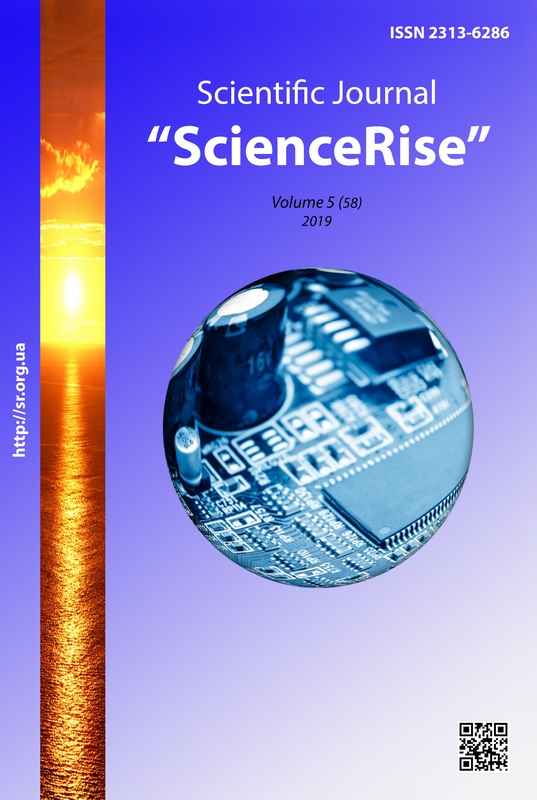Developing environmentally protective resource-saving technologies of radio-electronic equipment production
DOI:
https://doi.org/10.15587/2313-8416.2019.169005Keywords:
radio-electronic equipment, pickling solutions, copper chlorine, halogen-organic solvents, regeneration, recyclingAbstract
The compositions of the initial and spent technological solutions of the radio-electronic equipment production are investigated. Resource-saving technologies are developed and implemented: etching printed circuit boards with copper chloride solutions using countercurrent spent washing solutions and disposing of spent pickling solutions in the production of fungicides based on copper oxychloride; regeneration of halogen-organic solvents. The introduction of these technologies helps to prevent environmental pollution by toxic copper compounds (MPC of copper in fishery waters of 0.01 mg/dm3) and halogen-organic solvents
References
Vitriak, O. P. (2011). Voda u kharchuvannia liudyny. Voda v kharchovii promyslovosti. Odesa: ONAKhT, 7–8.
Nils Bor. Tsitaty i aforizmy. Available at: https://quote-citation.com/topic/nils-bor Last accessed: 27.03.2019
Boruk, S. D. (2013). Bezopasnost primeneniya gruntovykh vod Chernovitskoy oblasti v pishchevoy promyshlennosti. Yakіst і bezpeka kharchovikh tekhnologіy. Kyiv: Natsionalnyi universytet kharchovykh tekhnolohii, 17–18.
Melnik, O. P. (2013). Vikoristannya іnversіynoї khronopotentsіometrії dlya viznachennya vmіstu metalіv u kharchovikh produktakh. Yakіst і bezpeka kharchovikh tekhnologіy. Kyiv: Natsionalnyi universytet kharchovykh tekhnolohii, 18–19.
Dopovіd pro stan prirodnogo navkolishnogo seredovishcha v Kharkіvskіy oblastі u 2017 rotsі. Available at: https://kharkivoda.gov.ua/oblasna-derzhavna-administratsiya/struktura-administratsiyi/strukturni-pidrozdili/486/2736/95064 Last accessed: 27.03.2019
Dubova, N. F. (2014). Analіz zakonodavstva Ukraini z pitan bezpeki ta yakostі kharchovikh produktіv (oglyad lіteraturi). Gіgіena naselenikh mіsts, 64, 241–249. Available at: http://nbuv.gov.ua/UJRN/gnm_2014_64_38 Last accessed: 27.03.2019
Srednyaya prodolzhitelnost zhizni v stranakh mira. Available at: http://ostranah.ru/_lists/life_expectancy.php Last accessed: 27.03.2019
Korytskyi, Yu. V. et. al. (Eds.) (1986). Spravochnyk po эlektrotekhnycheskym materyalam. Vol. 1. Moscow: Enerhoatomyzdat, 368.
Ilin, V. A. Tekhnologiya izgotovleniya pechatnykh plat. Available at: http://solex2108.narod.ru/tipp1.htm Last accessed: 27.03.2019
Dobryian, M. A., Laryn, V. Y., Khobotova, E. B., Yurchenko, O. Y., Ehorova, L. M. et. al. (2014). Resursosberegayuschaya ekologicheski chistaya tehnologiya travleniya pechatnyih plat kislyimi i schelochnyimi mednohloridnyimi rastvorami. Visnik NTU «HPI». Seriya «Himiya, himichna tehnologiya ta ekologiya», 51 (1093), 37–46.
Samoylov, E. O. (2003). Fiziko-khimicheskie fazoobrazovaniya v sisteme Cu2+ – NH4+ – Cl– – H2O i puti ego regulirovaniya [Physico-chemical phase formation in the system Cu2 + - NH4 + - Cl– - H2O and the ways of its regulation]. Kharkiv, 121.
Arena, M., Auteri, D., Barmaz, S., Bellisai, G., Brancato, A., Brocca, D. et. al. (2018). Peer review of the pesticide risk assessment of the active substance copper compounds copper(I), copper(II) variants namely copper hydroxide, copper oxychloride, tribasic copper sulfate, copper(I) oxide, Bordeaux mixture. EFSA Journal, 16 (1). doi: http://doi.org/10.2903/j.efsa.2018.5152
Daviado, D. M. (2017). Methyl Chloroform and Trichloroethylene in the Environment. CRC Press, 112. Available at: https://www.crcpress.com/Methyl-Chloroform-and-Trichloroethylene-in-the-Environment/Aviado/p/book/9781315895406
Downloads
Published
Issue
Section
License
Copyright (c) 2019 Mikhail Dobriyan, Alla Pravda, Oleg Yurchenko, Yury Gliznutsa, Tatyana Karpova, Roza Zorya

This work is licensed under a Creative Commons Attribution 4.0 International License.
Our journal abides by the Creative Commons CC BY copyright rights and permissions for open access journals.
Authors, who are published in this journal, agree to the following conditions:
1. The authors reserve the right to authorship of the work and pass the first publication right of this work to the journal under the terms of a Creative Commons CC BY, which allows others to freely distribute the published research with the obligatory reference to the authors of the original work and the first publication of the work in this journal.
2. The authors have the right to conclude separate supplement agreements that relate to non-exclusive work distribution in the form in which it has been published by the journal (for example, to upload the work to the online storage of the journal or publish it as part of a monograph), provided that the reference to the first publication of the work in this journal is included.

